2020, a year for contemplation. A period of isolation gave us the time to slow down and possibly think of our past successes and future goals.
This summer I was supposed to be in Blandford celebrating the 100th anniversary of The Royal Signals, a corps I proudly served in during the early 1980s along with my father, who now aged 82, was a sergeant major in the same unit. Unfortunately, the celebrations will not be taking place this year but hopefully me and my dad will get down to Dorset very soon.
My career in the army allowed me to serve in Denmark, Falkland Islands, Belize and with The United Nations in Cyprus. During my last tour in Nicosia was when I met with my OC to tell him I planned to leave the army and move into greenkeeping in my hometown of Harrogate. His response was to disagree with my decision and many questions were asked from my superiors, who were also friends of my dad but my mind was made up and so a few months later I was returning to ‘civvy street’ and into the world of greenkeeping under my friend, mentor and long since retired, Tony Baxby - head greenkeeper at Harrogate Golf Club.
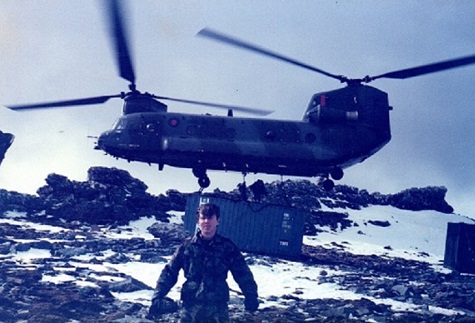
Mount Maria, Falkland Islands. I spent 4 weeks living up there, dismantling a rebro site and ammunition clearance. It was a very cold experience!
As the ‘older’ turfies out there will know, the years go by very quickly! And now I find myself having worked for over thirty years in the industry both as greenkeeper, course manager and in technical sales.
From my early experiences as greenkeeper at Harrogate Golf Club and in Munich to a new golf course construction and course manager at The Shropshire to the present day working at Headland Amenity, I have certainly seen the changes within the industry - from products available, machinery, technology & course management techniques.
The past few years have really seen some difficult times within the golf industry, mainly from budget restraints, withdrawal of chemicals and of course, the good old British weather with the ultimate word being ‘extremes’.
Undoubtedly, the coming months are going to prove very difficult for golf course managers, with most likely even tighter budget restraints during the financial fallout from the summer of this year. But with green shoots of golfers returning after lockdown and a fresh eagerness to get playing sports in the open air, hopefully golf will get a much-needed boost.
Planning ahead
As we start looking ahead to the autumn putting in place maintenance schedules and course management planning, we need to maximise every pound spent in terms of best value for the golf course. One issue that has changed drastically over the years, is that of disease management. With the loss of many fungicide active ingredients, the days of ‘firefighting’ with Iprodione and other contact fungicides have long gone, (along with the conversations over a pint of beer on a cold January evening in Harrogate, ‘how many times you sprayed this winter?) A new approach is needed.
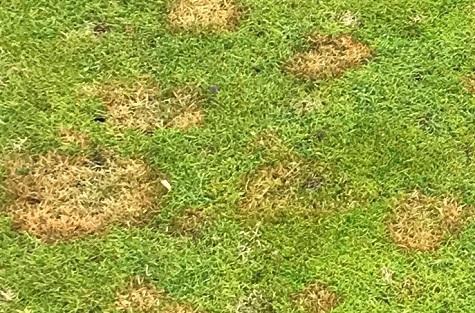
Though withdrawal of fungicide products has been a regular occurrence over the years, mainly due to changing legislation, there have been a variety of products still available to turf managers. The latest withdrawals have been sudden, leaving fewer options and disease management has required a totally different way of thinking, especially in terms of managing Microdochium nivale.
A positive response to this situation has emerged. Companies within the industry have worked very hard and spent a lot of money on research to develop solutions to manage disease, especially utilising a non-fungicidal approach.
Within Headland Amenity, fourteen years work has now gone into initial pioneering research both independently and at the S.T.R.I to where we currently stand in our non-fungicidal disease management strategy.
The team at Headland all carry a ‘Green Bible’ which details all the annual data from the trial-work we have concluded over the last fourteen years - from research findings within fungicide resistance screening through to the present tank mix solution of 20-20-30 plus Mantle mix.
The whole concept of the 20-20-30 mix has taken many years of trial-work and tweaks along the journey, to achieve the success that many turf managers are now seeing in drastically reduced incidence of Microdochium nivale in their playing surfaces.
Each product, whether a plant elicitor or protectant and the components within, have a specific role in helping to reduce any potential disease activity.
The ‘20-20-30’ name comes from the application rate per hectare of the given products, - 20L Turfite Elite, 20L Liquid Turf Hardener and 30L Seamac Proturf.
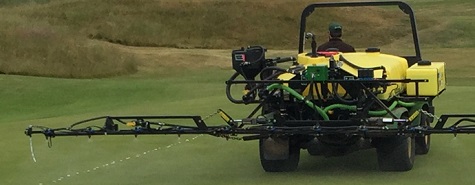
There are many variations available within the turf industry now, but they are not all the same! Just like when purchasing your fertiliser, it is not just about the analysis of the fertiliser (the numbers on the bag) you want to know what the make-up of that given fertiliser is. What is the nitrogen and potassium source? What is the fast start portion? etc. These are the type of questions you ask for fertiliser and the same should go with a non-fungicidal package you are looking to use.
What are the benefits to applying phosphite? What iron do you suggest? What application rates, what quantity of nutrient does that put down? What is the longevity? At what intervals should I spray? These are the questions I would want answers to in selecting any autumn disease management products along with written data on the trial work carried out and specific statements. The Headland Amenity ‘Green Bible’ shows detailed data and trial-work going back fourteen years.
The three liquid products all have unique features that distinguish them from other formulations. Together they become part of a strategic approach to turf management, led by research and practical evaluation, which most importantly comes from the turf manager in their feedback on the results they have achieved in a percentage reduction of Microdochium nivale activity within their playing sward.
Ingredients
So, what are the 3 products of 20-20-30? It contains phosphite you say, is this a fungicide?
Firstly, we look at Turfite Elite, which is a potassium phosphite based formulation with added salicylic acid. Is it a fungicide? In short, NO. Turfite Elite is absorbed when applied through the upper and lower surface of the grass plant leaf which then creates a physiological plant response. In turn, the salicylic acid triggers the plants own natural defence mechanism, known as SAR – Systemic Acquired Resistance. The phosphite acts as a biostimulant, encouraging the plant to increase its ability to grow away from plant pathogens and/or plant stress situations, improving plant health and in turn, lowering susceptibility to disease. Research supporting the biostimulant mode of action of phosphite has recently been published in the UK and Germany and will feature in a forthcoming technical article produced by Mark Hunt, Technical Director at Headland Amenity.
The other two products, Liquid Turf Hardener and Seamac Proturf, are both plant protectants. Supplied calcium and magnesium are quickly taken up by the plant in their nitrate forms, even at low air and soil temperatures. This increases the efficacy of the cell wall and thereby makes it harder for a pathogen to enter the grass plant. The foliar iron can decrease the moisture level on the plant leaf surface as well as lower the pH to help discourage pathogenic fungal growth. Trials results in the field and also in the laboratory have shown Seamac Proturf Fe provides the optimum iron formulation for suppression of Michrodochium nivale.
To enhance the package of 20-20-30 even further, we also now suggest adding Mantle, a water-soluble manganese, zinc, magnesium and Harpin Protein Elicitor combination, also giving assistance to the fundamental processes of both photosynthesis and protein synthesis, that contribute to a healthy plant.
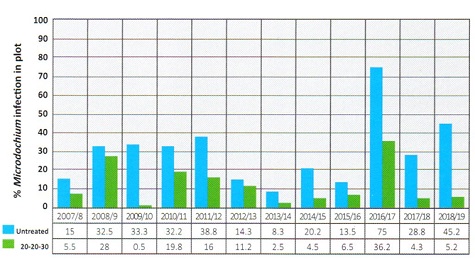
The above graph, highlights the success from 2017 in supplementing the 20-20-30 mix with 20kg per hectare of Mantle. An effective IPM program against Microdochium nivale, utilises the 20-20-30+Mantle tankmix, starting your first application during September, followed by frequent applications at 14-28 day intervals depending on the month and disease pressure to help prevent a population establishing during the autumn/winter.
Of course, managing Microdochium nivale requires many other aspects within the turf managers tool box, non-pesticidal treatments in combination with correct timing and application of approved fungicides & good greenkeeping practices.
The good old British weather, with its extremities has a lot to answer for. As part of our service to assist turf managers, we provide a link to weather information specific to their location, along with the weekly weatherblog written by Mark Hunt which you can subscribe to at weather@headlandamenity.com This gives very useful information not only on the weather for the week ahead but important agronomic advice along with any possible disease issues for the coming days.
Climatic conditions, particularly temperature and humidity are a big factor in driving Microdochium nivale activity and the management of both dew and guttation fluid are a necessity in autumn disease management.
As we move into the autumn with lower temperature and evapotranspiration, the plant leaf dries very slowly, sometimes staying wet for the whole 24-hour period. It is a well-proven fact that elevated humidity is a driver for increased Microdochium nivale activity. So, when considering the order in which the greens are cleared of dew in the mornings, problematic greens should be addressed first in the dispersal of any leaf dampness.
To help disperse dew, we would suggest the use of DewCure, which works to reduce leaf moisture, suppressing both dew and guttation fluid.
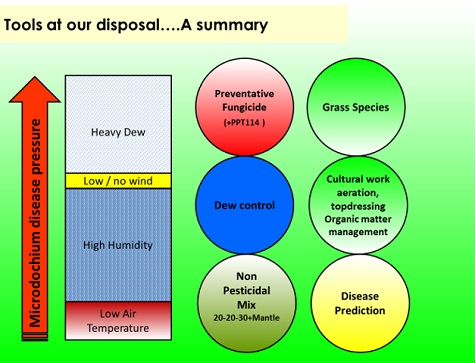
If you would like further information on the Headland Amenity approach to autumn disease management please email info@headlandamenity.com where a Headland manager specific to your location can assist you in working together in planning your disease management programme.
As my old Corp motto goes ‘Certa Cito’ our response will be ‘Swift and Sure’
David Howells
Regional manager (north)
Headland Amenity